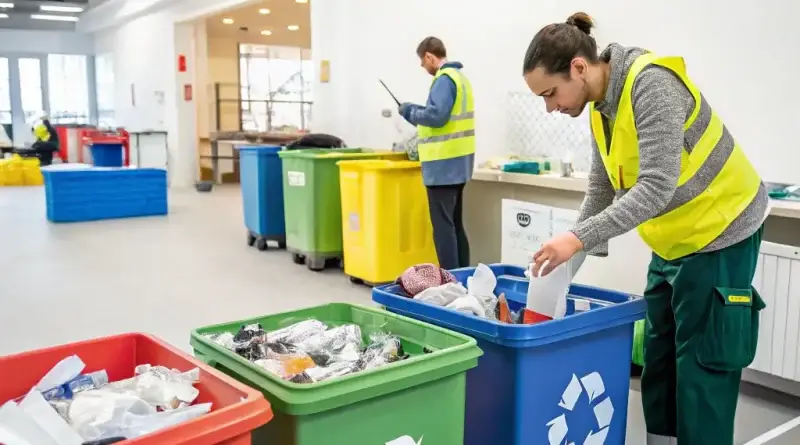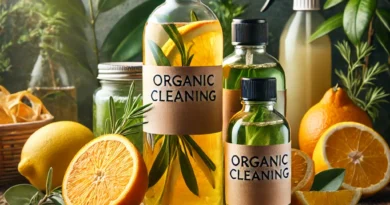Recycling Made Easy: A Beginner’s Guide
🌍 Why Recycling Matters—Now More Than Ever
Every day, we throw away items that could be recycled and given a second life. Plastic bottles, paper, glass, and metals end up in landfills—when they could have been reused. Recycling isn’t just about tossing stuff into the blue bin. It’s about understanding what can be recycled, how, and why.
At Frame Innovative, we believe sustainability should be simple. That’s why we created this beginner-friendly guide to recycling—to help you start strong and stay green.
💚 What Is Recycling, Really?
Recycling is the process of converting waste materials into new products, reducing the need for raw resources. When you recycle:
You cut down pollution
You reduce landfill waste
You save natural resources
You contribute to a circular economy
It’s one of the easiest ways individuals can fight climate change.
🧩 The 3 Basics: Reduce, Reuse, Recycle
Before you toss anything into the bin, remember the 3 R’s of sustainability:
Reduce what you consume
Reuse items when possible
Recycle as the last step
Many people skip straight to recycling, but reduction and reuse are even better for the planet.
🧺 What You Can Recycle (And What You Can’t)
Let’s bust the myth: not everything is recyclable. Even if an item has a recycling symbol, local rules vary.
✅ Commonly Recyclable Items:
Paper (newspapers, magazines, cardboard)
Glass bottles and jars (rinsed)
Aluminum cans and tin
Certain plastics (like #1 PET and #2 HDPE)
Clean food cartons
Steel cans
❌ Items That Often Can’t Be Recycled:
Greasy pizza boxes
Plastic bags and wraps
Food-soiled containers
Ceramics or Pyrex
Straws, utensils
Hazardous materials (batteries, electronics – require special disposal)
➡️ Tip: Always check your local recycling program for accepted materials.
🧼 Clean and Dry: How to Recycle the Right Way
Recycling is only effective if it’s clean. Contamination (like leftover food) can ruin entire batches of recyclables.
Do this before tossing items into the bin:
Rinse containers: Remove food and liquids
Dry them: Prevent mold and odors
Flatten cardboard: Save space
Keep lids on: Unless your program says otherwise
🏠 Room-by-Room Recycling Guide
Here’s how to make recycling part of your daily routine—one room at a time.
🧑🍳 Kitchen
Recycle: food cans, jars, cereal boxes, drink containers
Pro Tip: Set up separate bins for plastics, glass, and paper
🚿 Bathroom
Recycle: shampoo bottles, cardboard toilet paper rolls
Avoid: used tissues or wet wipes (they clog systems)
🛋️ Living Room
Recycle: magazines, newspapers, empty water bottles
Reuse: packaging or boxes from online deliveries
💻 Home Office
Recycle: printer paper, envelopes, cardboard packaging
Shred confidential documents (check if your center accepts shredded paper)
🌟 The Power of Composting (Bonus Eco Tip!)
Recycling is great—but composting is another beginner-friendly green habit. Organic waste like:
Fruit & veggie peels
Coffee grounds
Eggshells
Leaves and grass
…can be turned into rich soil for your plants instead of methane-producing landfill waste.
Want to start composting at home? Check out our beginner’s composting guide or grab one of our kitchen compost bins here.
📦 What to Do With Hard-to-Recycle Items
Some items need special handling but shouldn’t go in the trash:
✅ Batteries
Take to electronic stores or battery collection points
✅ Electronics (e-waste)
Recycle at tech retail stores or municipal drop-off events
✅ Lightbulbs, Paint, Chemicals
Look for hazardous waste disposal programs in your city
✅ Clothing and Textiles
Donate, repurpose, or find textile recycling programs
➡️ Find local drop-off spots with tools like Earth911.com
🛒 Shop Smarter: Reduce Waste Before It Starts
Want to create less waste in the first place? The answer starts at the store.
Green shopping tips:
Choose products with minimal packaging
Buy in bulk to reduce containers
Support brands that use recycled materials
Look for compostable or biodegradable packaging
Bring your own bags, bottles, and containers
💚 At Frame Innovative, we curate eco-friendly, compostable, and reusable products to help you reduce waste effortlessly. Explore now.
🏷️ What Do All Those Recycling Symbols Mean?
Ever seen the little triangle on your plastic bottle? That’s a resin code, not a recycling symbol.
Here’s a quick guide:
#1 PET (Polyethylene Terephthalate) – Recyclable (water bottles)
#2 HDPE (High-Density Polyethylene) – Recyclable (milk jugs)
#3–7 – May not be accepted everywhere. Check locally!
If you’re unsure, it’s safer not to recycle the item than to risk contamination.
🌐 Recycling Around the World
Recycling systems vary from country to country—and even between cities. In places like Germany, Japan, and Sweden, recycling rates are above 50%. They achieve this by:
Mandatory sorting rules
Incentives for recycling
Public education campaigns
Imagine how much cleaner the world would be if we followed suit!
📈 How Your Efforts Add Up
You may feel like you’re just one person. But over a year, your recycling efforts can:
Save hundreds of pounds of trash from landfills
Reduce your home’s carbon footprint by up to 30%
Conserve energy equivalent to charging your phone for a decade!
✅ Quick-Start Checklist: Make Recycling Easy at Home
Set up separate bins for paper, plastic, metal, and glass
Learn what’s accepted in your local recycling program
Rinse and dry all recyclables
Keep a compost bin in your kitchen
Properly dispose of batteries and e-waste
Reuse bags, jars, and boxes whenever possible
Educate your family—especially kids—about why it matters
📌 FAQs: Recycling Questions, Answered
Q: What happens if I recycle something dirty?
A: It could contaminate other recyclables and send the whole batch to landfill. Always clean first.
Q: Can I recycle plastic bags at home?
A: No, but some grocery stores have drop-off bins for them.
Q: Is it okay to recycle bottle caps and jar lids?
A: Yes—most programs now accept them if they’re made of the same material (plastic or metal).
Q: How can I recycle more at work?
A: Suggest separate recycling bins, encourage double-sided printing, and reduce single-use products.
🌿 Final Thoughts: Small Steps, Big Change
Recycling isn’t about perfection—it’s about progress. Every can you rinse, every bottle you sort, and every item you compost sends a powerful message: you care about the future.
At Frame Innovative, our mission is to inspire and educate individuals on making greener choices for a sustainable future. Let’s keep things simple, sustainable, and smart—together.
✅ Ready to go green? Browse eco-friendly product collection and take the next step in your recycling journey!



